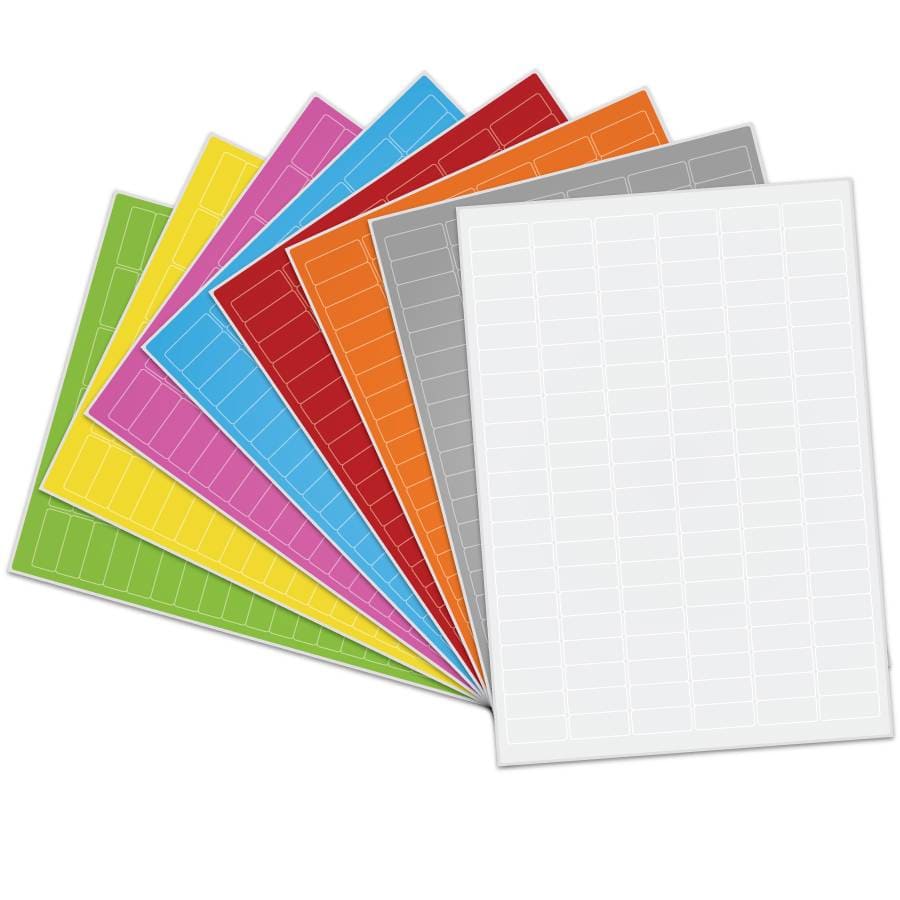One very important aspect of running a successful business is labelling your products with clear and concise information such as descriptions and prices. When customers pick up a product in the store they expect to read useful information about it and decide whether they need it or not or whether the price suits them or not. Or, if you ship a parcel to a customer via a delivery agency you need to provide all the information necessary for the goods to get to the person who made the purchase. Furthermore, labels are necessary to set up a proper barcode system. All in all, you can’t imagine running a business without the use of labels. But which types do you need, labels on sheets or labels on rolls? Read on to find out about their differences and similarities.
Labels on Sheets
They are, in fact, the label version of the printer paper. The A4 sheet of labels is intended for use in inkjet and laser printers. You put them in the printer as you do with regular copy paper and print the labels with the help of the suitable templates you have in your software. In this way, you can produce your own professional labels in the office or at home.
You can choose a matt white paper for a standard address or shipping labels or paper with a gloss finish that gives a classy professional look for product labels on jam jars, bath salts or candles. You have the option to choose from a range of labels on sheets with adhesives but in case you want to put them on furniture or other sensitive surfaces you should consider choosing removable labels that once removed they won’t leave any damaging residue.
Labels on Rolls
As the name suggests, labels on rolls are spun around a cardboard spool. In order to print on them, you must have a direct thermal printer, a thermal transfer printer or inkjet roll printer depending on the type of thermal labels(labels on rolls) you are using. To use them properly you mount the roll inside the roll printer and the machine prints them one label at a time.
They are usually used for applications where labels must be printed individually on a regular basis and with different information on each of the label. They are perfect to use for addresses, barcodes, product prices and descriptions.
Labels on Sheets or Labels on Rolls?
In order to identify your needs regarding the type of labels, here are their different uses according to the scenarios.
- When each label needs to have different content (for example barcodes, shipping labels and name tags) the ideal solution would be labels on rolls as it is a faster and an easier way to print them. You can customise thein formation you put on each label and have it printed via a suitable printer.
- If you need to print the same information on each label (for example return address labels) then labels on sheets is a better solution.
- If full colour printed labels are what you need then labels on sheets are better because inkjet and laser printers come up with better results when printing colour logos, images and photographs. Or, if you own an inkjet roll printer then you can go with labels on rolls as well because these printers can print 16.7 million colours.
- If you don’t need to pay attention to colour then rolls is your best option. Direct thermal printers will print your labels in black or white and as they are highly resistant to smudging and smearing you will end up with a high-quality result. However, if you still need a touch of colour then the thermal transfer printers can add a touch of the preferred colour. Keep in mind, though, that you can only print in the colour of the chosen ribbon.
A Deeper Look into the Uses
- For long-lasting labels, you should go with thermal transfer labels on rolls. The thermal transfer printers melt the ribbon onto the label surface and their by-products aren’t affected by light or heat and can even withstand contact with chemicals and the elements. Thermal transfer labels on rolls are perfect for product identification, inventory and asset labelling.
- When speed is of essential importance then labels on rolls are your safer choice. Roll printers can print a huge amount of labels in a short period of time, even 70 labels per minute.
- The toner-saving option would
be labels on rolls because ink printers will definitely cost you more. As laser printers don’t use ink they are less expensive in the long run, but not that much as the roll printers are. - If shipping is your primary purpose of using labels then whichever type you choose you won’t make a mistake provided that the paper material is produced to the highest standards.
- If appearance is all that matters then you should definitely go for labels on sheets because they add a professional look to the packages. The fact that you can print them in full colour on a variety of paper materials including matte and glossy paper certainly adds to the appealing appearance factor.


